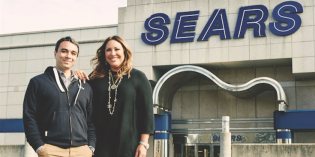Marketers still attempting to determine the worth of a Facebook “like” or a tweet are now faced with assigning a value to their products being “pinned” on the fast-growing social media scrapbooking site Pinterest.
A joint study developed by Vancouver’s Emily Carr University and the research firm Vision Critical has found what one of its principals calls a “surprisingly high” correlation between “pinning” and purchasing.
The study of more than 500 Pinterest users from Canada, the United States, the United Kingdom and Australia found that more than 1 in 5 Pinterest users have gone on to purchase an item they have “pinned” to a Pinterest board.
The study found that 12% of Pinterest users have gone onto purchase an item they have “pinned” online, while 16% have purchased a “pinned” item in a bricks and mortar location.
While the data doesn’t indicate whether a “pin” is a true signifier of purchase intent, Alexandra Samuel, director of the Social and Interactive Media Centre at Emily Carr and co-founder of Vancouver-based social media marketing firm Social Signal, told Marketing it does provide a “significant clue.”
“If you’re Honda [which launched its official Pinterest page in April] and you see that somebody has ‘pinned’ a CRV to a pinboard called ‘SUVs to consider,’ you want to see what other vehicles they’re considering and maybe even leave a comment or reach out and see if you can provide them with more information on their decision.”
Samuel said that because Pinterest has not yet officially released its application program interface (API) – tools for building Pinterest-related applications – marketers do not yet possess tools similar to the ones they use to manage their Facebook and Twitter presence.
“Until you start getting those aggregate data tools, it’s hard to manage,” said Samuel. “It makes sense for Honda to do that because we’re talking about a relatively large-value purchase, but does it make sense for Shoppers Drug Mart to notice who’s ‘pinning’ the latest shade of mascara? Probably not, because it’s not super economical.”
Samuel recommended that marketers talk to their social media monitoring company about developing monitoring tools for Pinterest. Such tools, she said, could help companies determine the appropriate social media strategy.
If an apparel maker is able to determine that its red products get “pinned” three times as often as its blue products, for example, that might paint a picture of the types of images it should feature on its site and in social media feeds, said Samuel.
Pinterest has grown from less than 1 million users in May 2011 to about 20 million users worldwide, according to comScore. It recently received US$100 million in financing from Japanese online retailer Rakuten Inc.
Earlier this year, a report by Experian said that Pinterest is now the third-most popular social network in the U.S. based on number of visits, surpassed only by Facebook and Twitter.
Interestingly, however, 25% of Pinterest users surveyed by Emily Carr University and Vision Critical indicated that if Facebook had a similar “pinning” capability, they would stop using the upstart service.
“It’s kind of hard to see how Facebook would do that, but it has gobbled up other people’s business models before,” said Samuel. “I think the social space in general is fluid, but the fundamental behaviour of an image-based bookmarking service is likely to be persistent.”









